Oceans, Ices, Vapors: Turns out the Solar System isn’t so parched. We survey the moons and planets where scientists are finding water in all its forms.
Underwater water worlds are no place for vegetarians Sorry folks stay at home no place for vegetarian astronauts because outside planet earth most habitable worlds are Underwater planets without Sunlight so… See ya… (fishetarianism because it is universal and cosmic)
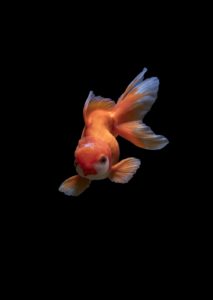

Last week brought the news that Enceladus likely has a warm salty ocean, and that liquid water lurks beneath the surface of Ganymede. These findings are continuing to chip away at the once-held belief that the solar system was dry and barren, bereft of water.
THE HUNT FOR EXTRATERRESTRIAL LIFE HAS TURNED TO OUR OWN COSMIC BACKYARD
It seems there are few places in the solar systems without some amount of water, whether liquid or solid. There’s even a small amount of water vapor on Venus, something like 20 parts-per-million. And every time a source of liquid water is found or suggested, it brings up the chances of life on that world because of the way water acts as a solvent – facilitating the metabolic processes at the most basic level of life. That’s why the hunt for extraterrestrial life (quite doubtfully of an intelligent sort, though we’ve found some quite remarkable octopuses on Earth) has turned from distant solar systems to our own cosmic backyard.
Here’s the breakdown of all the water we know about in the solar system, and what form it comes in.
Oceans
All But Confirmed:
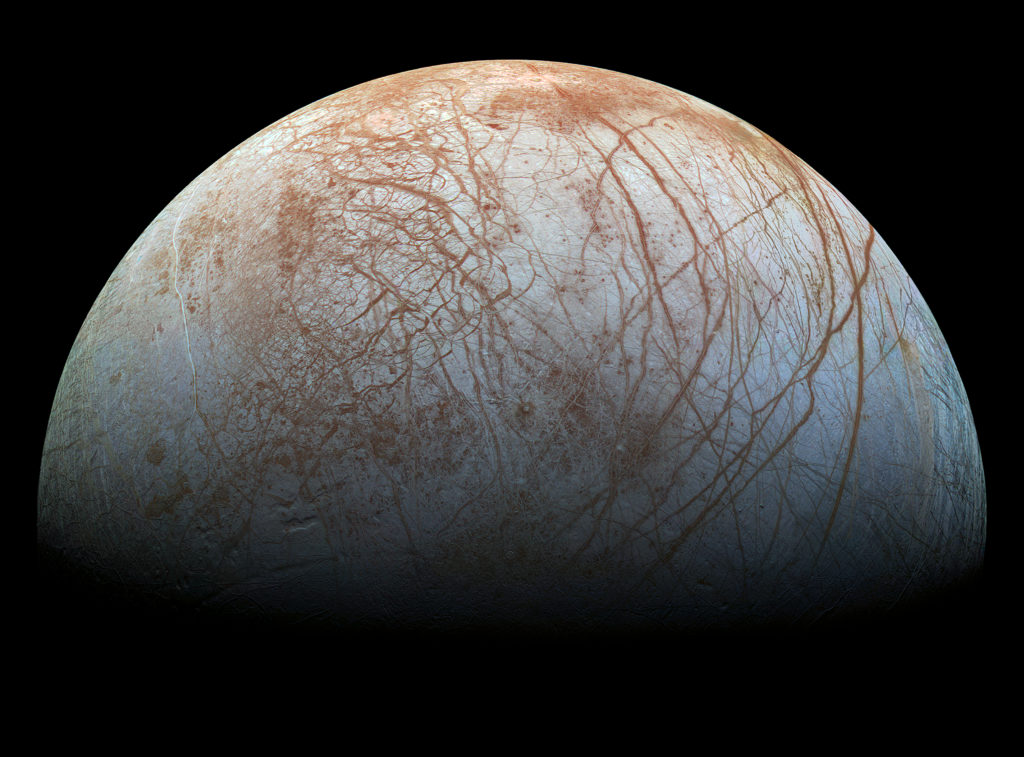
Europa
- Gravitational force : 1.315 m/s².
- Escape velocity : 2.025 km/s .
Europa has been the biggest contender for life for years now, with a craggy icy crust hinting in almost every way at an ocean below. Thanks to the tidal effects from Jupiter (friction inside the moon created by the pull of the planet’s gravity), the water would be kept liquid and possibly even warm below the icy crust, helped by possible hydrothermal vents.
There’s been some evidence of ice geysers shooting from the surface of Europa, as well as evidence that the ocean could have Hadley Cells—warm water radiating from the moon’s equator. Europa could provide the possibility not just for life, but, if the conditions were just right, even complex life.
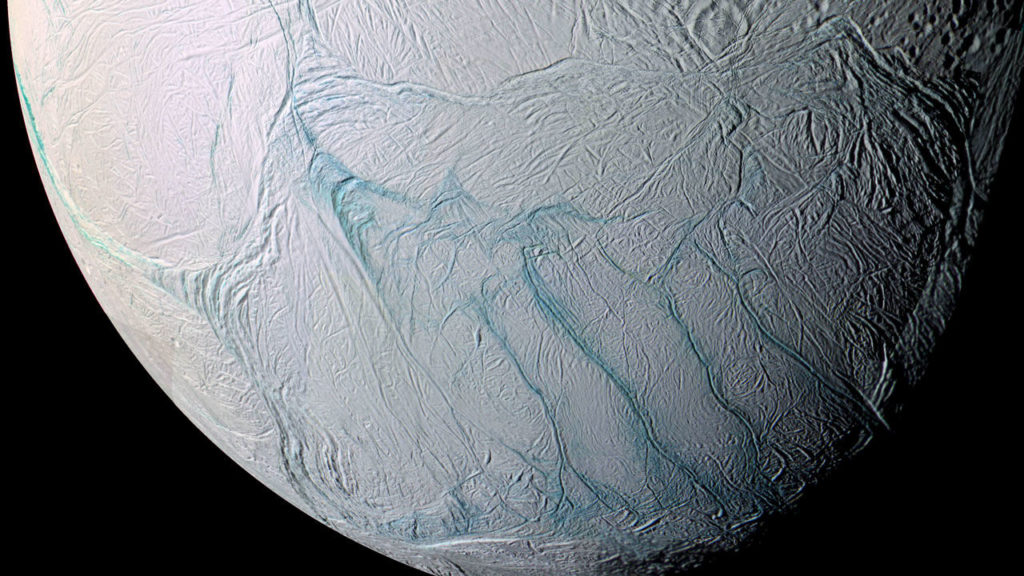
Enceladus
- Gravitational force : 0.113 m/s².
- Escape velocity : 0.239 km/s.
We’ve known of tiny, sleepy Enceladus since 1789. The diameter is just 310 miles, smaller even than Ceres and Vesta, the two largest objects in the asteroid belt. Compare that to Europa, slightly smaller than our Moon at a 1,950 mile diameter. Never mind its small size: This is one of the most intriguing places in the solar system and best candidates for a warm, wet, salty ocean. It has as high a probability for life, if not higher, than Europa.
Enceladus orbits near the rings of Saturn. In fact, watery eruptions from Enceladus’ ice geysers comprise the F-Ring of the gas giant—the moon spews 1,000 tons of water into space every hour, according to Phil Plait at Bad Astronomy, along with organic molecules, salt, and other materials. Recent research suggests the ocean is also very warm thanks to the tidal effects from Saturn. The tug causes hydrothermal activity, which warms the oceans and causes the geysers, all in the kinds of hot beds that sprouted life on Earth.
The Probables
Ganymede
- Gravitational force : 1.428 m/s².
- Escape velocity : 2.741 km/s.

Ganymede is the largest moon in our solar system, bigger than even the planet Mercury. Astronomers had long suspected that an ocean lies beneath the 100-mile-thick ice crust at the surface, and in a new study, aurorae activity suggest that the ocean is somewhat warm and definitely salty. Unlike Europa, no ice geyser activity has yet been spotted. This could be because of a reduced tidal effect on the moon, which is further from Jupiter than Europa. Unlike Europa, it doesn’t have the cross-hatched icy surface showing consistent geologic surface activity. Still, the signs are good that Ganymede is harboring an ocean.
The Maybes
Callisto
- Gravitational force : 1.236 m/s².
- Escape velocity : 2.44 km/s.
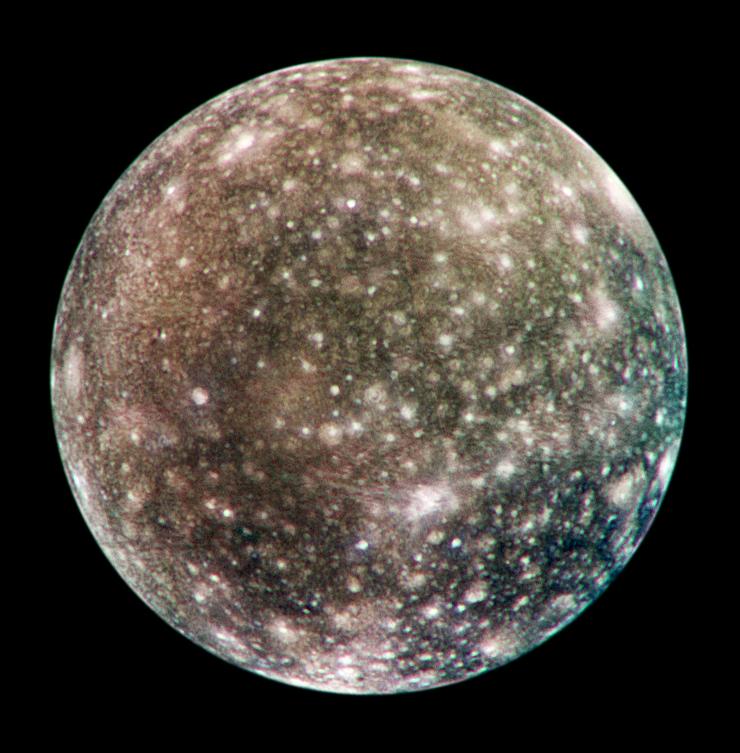
Callisto is similar in composition to Ganymede and, as the furthest out of the four Galilean moon of Jupiter, is bombarded with the least amount radiation. It also has a magnetic field, adding some additional protection.
We know there’s water here—what we don’t know is to what extent it’s liquid. Callisto’s relative lack of geologic activity suggests that the moon might not be able to sustain an ocean without the presence of some kind of anti-freeze compound within, meaning that there could be just a whole lot of ice in there. However, as the farthest out of the satellites, it could make an interesting destination for exploration, allowing you to avoid the harsher effects of Jupiter’s radiation while remotely exploring the other moons for signs of oceans and life.
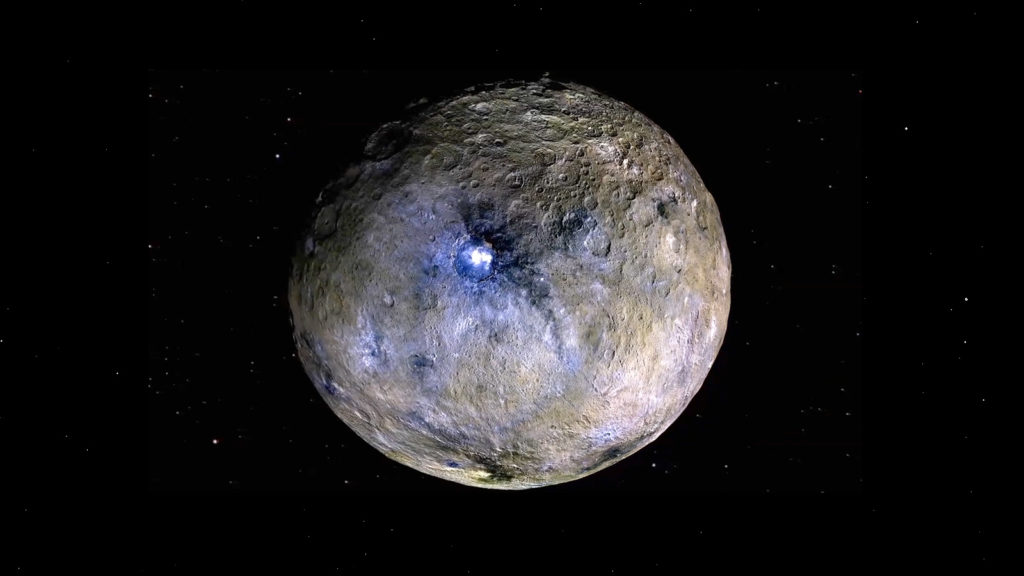
Ceres
- Gravitational force : 0.27 m/s².
- Equatorial escape velocity: 0.51 km/s
CERES IS LESS A BALL OF ROCK AND MORE A WATERY DWARF PLANET
Ceres has been known since 1801, but its small size has made it difficult to study. Until recently, it was believed to be a relatively rocky body. But recent observations from Hubble and evidence from the Dawn spacecraft, which just arrived there, have raised an intriguing possibility: that Ceres is less a ball of rock and more a watery dwarf planet with an icy mantle and a slushy ocean below. Located in the asteroid belt between Mars and Jupiter, the world could be our nearest oceanus neighbor. If it’s true, it would be the nearest world to Earth with an ocean. We’ll know more soon as Dawn’s work continues.

Mars
- Gravitational force :3.711 m/s².
- Escape velocity : 4.25 km/s.
The Red Planet probably once had oceans, including one covering a good chunk of the northern hemisphere. There are traces of water left on the surface, including compounds from the evaporation of the ancient ocean, as well as seasonal water ices covering the surface of the planet. There is some evidence pointing to occasional melting on the surface as well.
That much is clear. But there’s an intriguing possibility that Mars still has water underneath the surface, possibly in the forms of aquifers. Theoretically, these underground waterways could still host microbial life under the surface of Mars. The question, then, is whether this water exists as ice or liquid, and how much of it lurks beneath the soil. An entire ocean’s worth is unlikely, but a significant amount of subsurface water isn’t.
Future missions, like the Mars 2020 rover and Russia’s ExoMars probe, will look specifically for signs of organics and water under the martian surface.
Dione
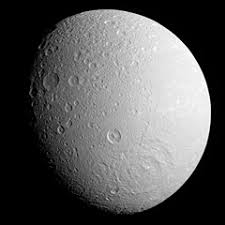
- Gravitational force :0.232 m/s².
- Escape velocity : 0.51 km/s.
The team behind NASA’s Cassini probe, which has turned up many of the exciting findings about Saturn and its moon, joking called Dione a “weaker copycat of Enceladus.” This Saturnian moon is much less active now than in the past, but it shows signs of geologic activity, including giant mountain peaks and other evidence pointing to a warmer history. It’s possible that the moon retains enough of that heat for a small ocean to exists.
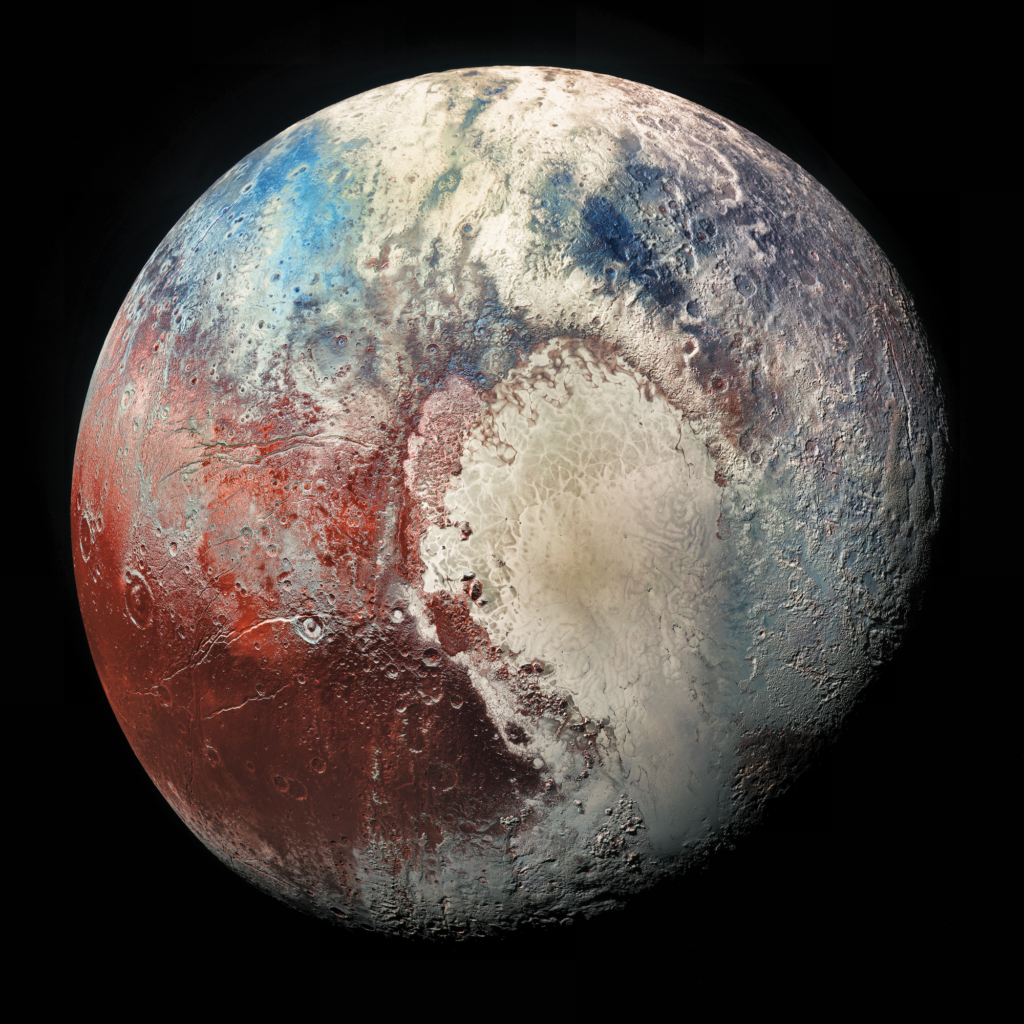
Pluto (and maybe Charon)
- Gravitational force :0.62 m/s².
- Escape velocity : 1.212 km/s.
New Horizons will fly by Pluto this summer, becoming the first spacecraft to directly visit the world once known as the ninth planet. It may discover something that once seemed unlikely: an ocean.
Pluto is still seen mostly as an icy world. However, the tidal forces from its orbit with its largest moon Charon—combined with what scientists the violent formation of the system (a large collision likely formed Pluto and its five moons out of the same materials)—means Pluto could have hosted a ocean, and leaves open the outside possibility that it’s still around.

Noticeably Absent
Titan
- Gravitational force : 1.352 m/s².
- Escape velocity : 2.639 km/s. (0.236 Earths) (1.11 Moons)
It seems odd not to be able to include Titan, Saturn’s largest and arguably most fascinating satellite, on this list. Titan has some of the most abundant pools of liquid found anywhere in the solar system, but those come in the form of methane, a hydrocarbon chain that’s good for life, but not necessarily as we know it.
Still, Titan deserves to be mentioned in any tally of potentially habitable places because of its resemblance to early Earth. So here it is.
Icy Bodies
Mimas
- Gravitational force :0.064 m/s².
- Escape velocity : 0.159 km/s.

Mimas, the “Death Star moon,” is pretty much one big snowball. There doesn’t seem to be much more to it than water ice. Yet a few unusual features hint at something weird on Mimas. The moon wobbles as it orbits Saturn, which indicates something unusual going on beneath the surface. The Cassini team says that it could be an ocean. But only maybe. The other chief possibility is that Mimas has a football-shaped core giving it the unusual tilt.
At around the size of Enceladus, the moon is too small to retain the heat from its formation, so any ocean on Mimas would have to have an outside force acting on it—possibly radioactive decay.
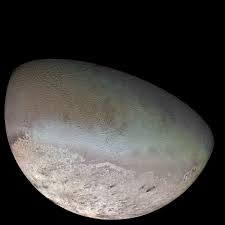
Triton
- Gravitational force :0.779 m/s².
- Escape velocity : 1.455 km/s.
Neptune’s largest moon, Triton, looks a lot like Pluto. There’s a reason for that. Its retrograde (backwards) orbit in comparison to the rest of the system suggests that Triton could be a captured Kuiper Belt object, and not something that formed alongside the planet. The moon’s surface seems to be a mix of methane and water ices, much like Pluto, and there’s the outside chance of an internal ocean, provided there is enough heating or radioactive decay.
The moon likely has geysers, but instead of water they probably shoot nitrogen, giving the moon a thin atmosphere. We just don’t know much else about Triton because the only close-up imaging came from Voyager 2’s flyby in 1989.
Titania, Oberon, and Umbriel
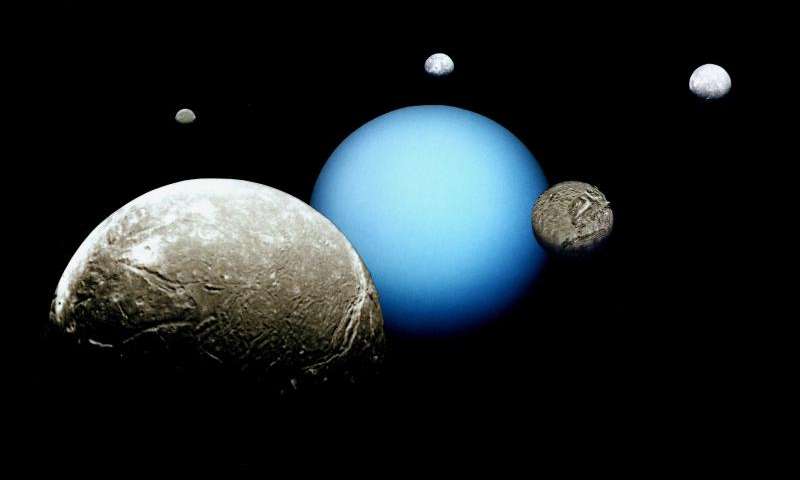
Titania
- Gravitational force :Gravity: 0.367 m/s².
- Escape velocity : 0.773 km/s.
Oberon
- Gravitational force :0.346 m/s².
- Escape velocity: 0.727 km/s.
Umbriel
- Gravitational force :0.2 m/s².
- Escape velocity: 0.727 km/s.
The same thing goes for Uranian moons: We need a better look at them. But preliminary indications show that Titania and Oberon are likely ice and rocky materials. Neither has, at the time, enough evidence to support liquid water hypotheses without an anti-freeze agent like ammonia.
Umbriel, too, is largely composed of ice, but is even less likely to have an ocean. It does, however, contain a bright spot of ice near one of its poles, likely the effect of a crater impact on the surface. There is also evidence of carbon dioxide gasses trapped under the surface.
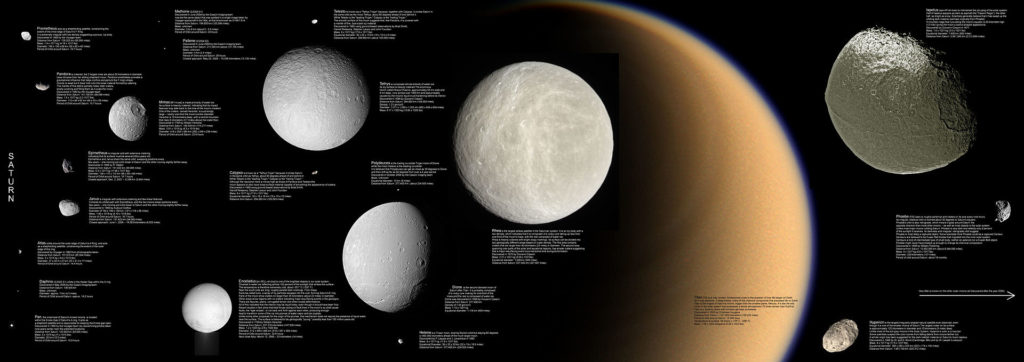
Tethys, Rhea, and Iapetus
Tethys
- Gravitational force :0.145 m/s².
- Escape velocity : 0.394 km/s.
Rhea
- Gravitational force :0.264 m/s².
- Escape velocity : 0.635 km/s.
Iapetus
- Gravitational force :0.223 m/s².
- Escape velocity: 0.573 km/s
These moons of Saturn appear similarly frozen, though there’s an outside chance of liquid water on Rhea. These worlds are relatively inert, though Iapetus shows evidence of water sublimation (moving directly from solid to gas) on the surface. While these moons may not be good candidates for liquid water, they demonstrate the sheer abundance of water in the outer solar system.
The Kuiper Belt
There are hundreds of known objects out in the Kuiper Belt, where Pluto resides, many of them believed to be icy. The dwarf planets Eris and Haumea are believed to be similar to Pluto in composition, with water ice on the surface. But these small worlds have been discovered only in the last decade. There are also a few dwarf planet candidates that are known to be icy in nature, including Varuna, Quaoar, and Orcus. The latter has some indication of cryovolcanism and could potentially have a liquid ocean.
There are also a number of comets in the Kuiper Belt and beyond that are believed to be composed of water. This includes the first identified member of the Oort Cloud, Sedna.
A Little Bit of Water
Mercury
- Gravitational force :3.7 m/s².
- Escape velocity :4.25 km/s.
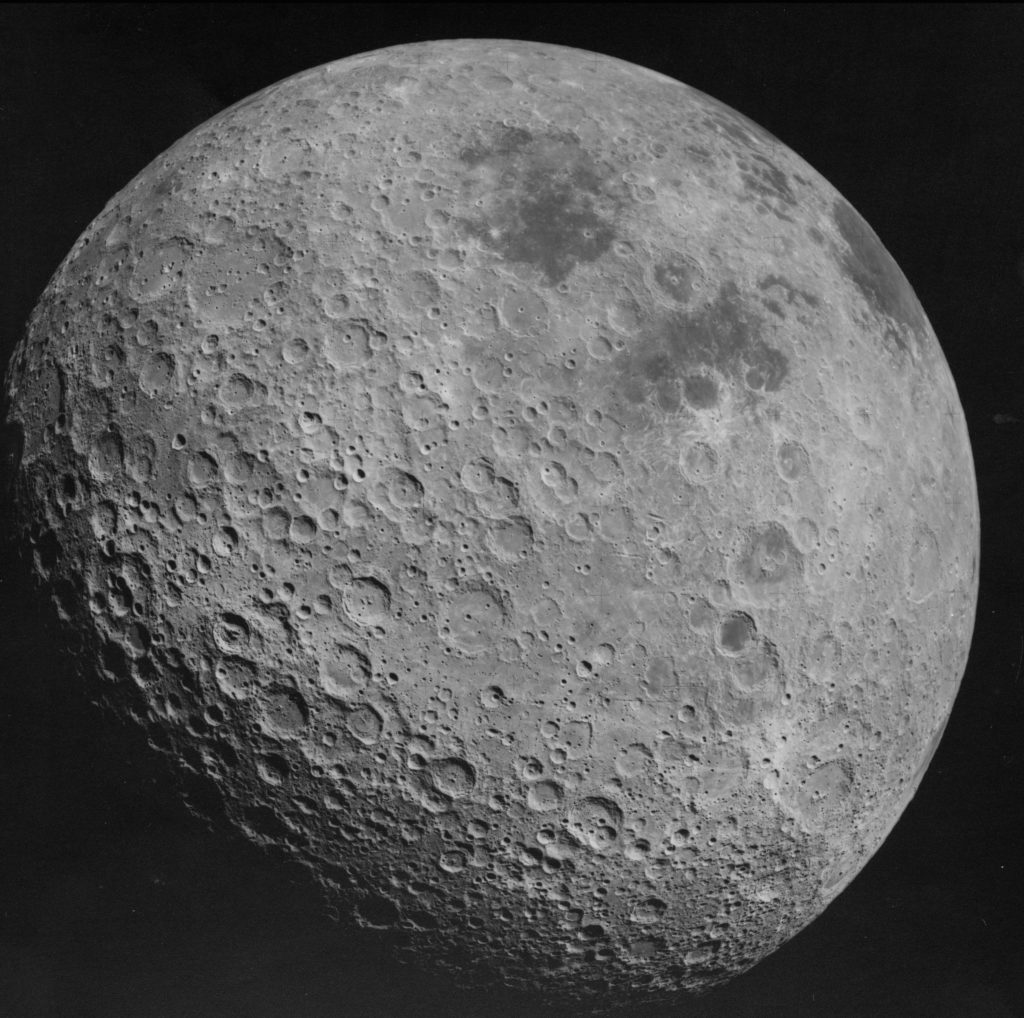
Perhaps the most surprising place water has been detected in the solar system is Mercury, the closest planet to the sun. While the surface is scorching, the pole are often untouched by the sun’s heat, leading to an area where ice can accumulate. In October, the Mercury-observing MESSENGER spacecraft snapped some polar photos of the frozen ice caps. Liquid water is unlikely because Mercury is so hot, but MESSENGER found signs that some of the accumulations were recent.
The Moon
- Gravitational force :1.62 m/s².
- Escape velocity :2.38 km/s
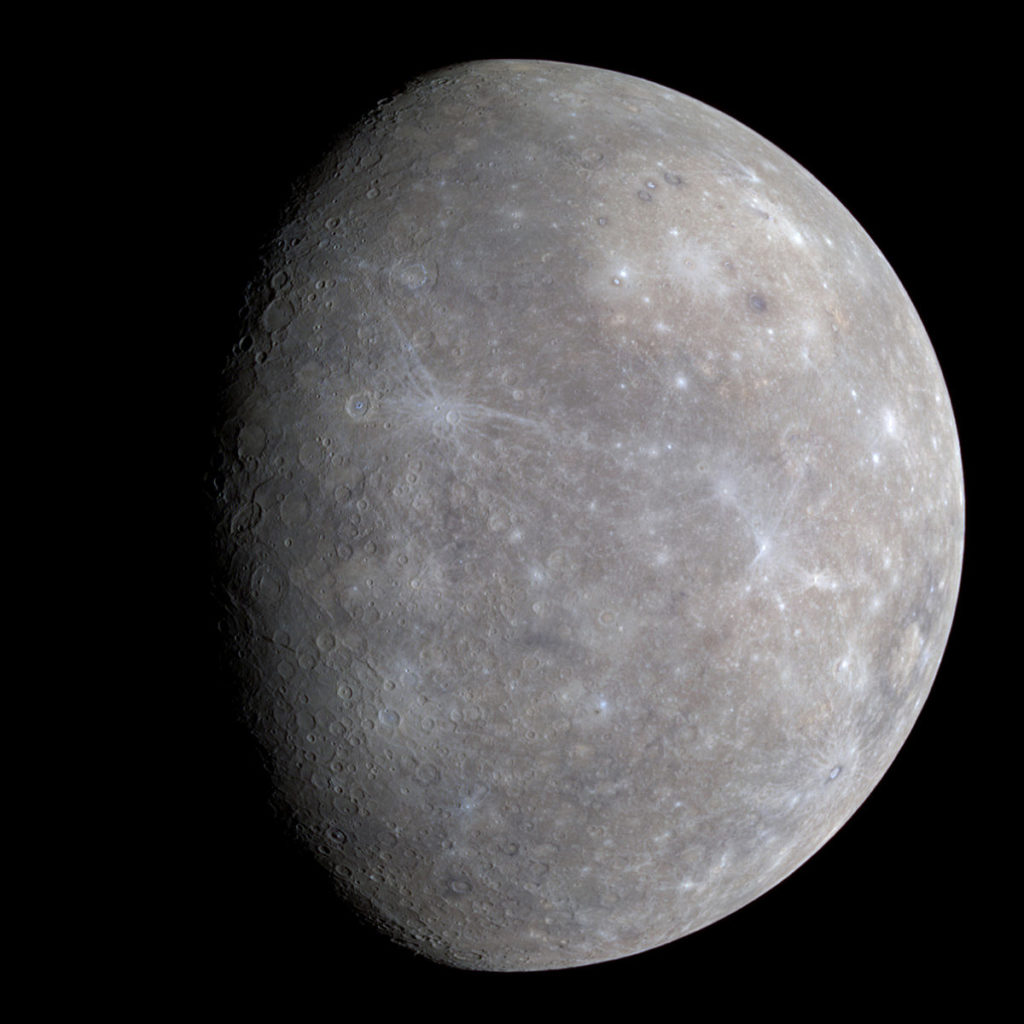
The Moon and Mercury, they’re really not so different in appearance. Both are airless, rocky worlds, and both, it seems, have accumulations of water ice at the poles. Scientists had long suspected ice could be on the moon. India proved it in 2009… by crashing the Chandrayaan-1 probe headlong into the ice and seeing the plumes it formed.
While it’s far from abundant, the water ice on the moon could help out moon colonization some day. If we ever get back there.
Neptune and Uranus
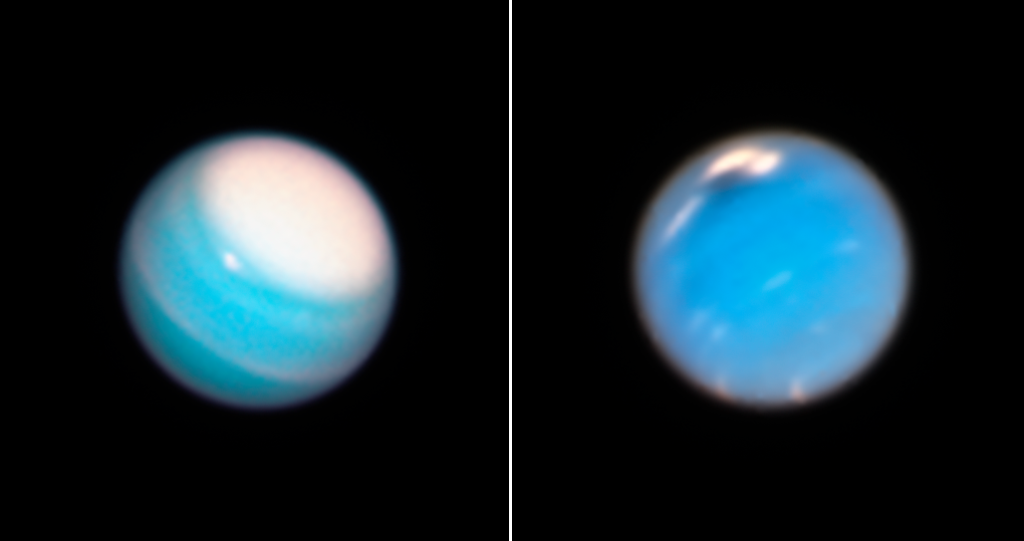
Neptune
- Gravitational force :11.15 m/s².
- Escape velocity :23.5 km/s
Uranus
- Gravitational force :8.87 m/s².
- Escape velocity :21.3 km/s
Here’s another way that your grade school science textbook has been upended: Some researchers have begun calling Neptune and Uranus “ice giants” rather than “gas giants.” In part, this is due to the abundance of ices in the lower layers of the planets, in weird states made possible by the intense pressure.
WATER VAPORS HAVE BEEN SPOTTED IN THE UPPER ATMOSPHERES OF THESE WORLDS
Water vapors have been spotted in the upper atmospheres of these worlds, while ices in the lower parts of the atmospheres are suspected, especially in the “mantle” – the area of hot ices in the lower atmosphere. Some astronomers have gone as far as to propose “oceans” in both planets, though they would be nothing like the big blue bodies of water we know. The boiling temperatures would keep what would otherwise evaporate into a sort of solidified state under incredible pressure.
Vapors
There are hundreds more places in the solar system where water can be found, whether tiny, ice packed moonlets never given official mythological names or just areas with a moderate accumulation of ice. Trace amounts of water vapor have been detected on Venus, Jupiter, and Saturn.
Still, it speaks to the abundance in our solar system, and the ways our views have changed from a dry solar system with a pale blue dot in its midst to one of abundant water and rife with possibilities for life.
Right now, Earth is the only true pale blue dot, the only place where life as we know it can exist, where temperature variables create a wide array of ecosystems and vegetation, where a thick, luscious atmosphere enables life by air, by sea, and by land. But it may not be the only genesis in our solar system. Life could thrive in dark depths of distant oceans, in forms large and small, life we can’t fathom the shape of because it has no point of reference to any we’ve experienced. We also don’t need to travel light years to find it.
EARTH IS THE ONLY TRUE PALE BLUE DOT, THE ONLY PLACE WHERE LIFE AS WE KNOW IT CAN EXIST
There’s an exobiology truism that where there is water, there is life. And where once we believed that we were the only place to find water, we’ve instead proven that it’s abundant. While it may not mean life in the depths of Neptune or on the frigid, dark poles of Mercury, it could open the door for new explorations not just at Europa and Enceladus, but below the crust of Ganymede or in the depths of Dione. Not just fossil hunting on Mars but looking for real, tangible, living, breathing organisms on Ceres.
It could provide way stations as we move out into the farther reaches of space. And if there’s abundant water in our own backyard, it shows that it may not be so rare to find, and that we may not be alone in the universe, whether that’s on a mini-Neptune 2000 light years away, or on a cold moon orbiting Saturn inside its rings.
Earth
- Gravitational force : 9.807 m/s² .
- Escape velocity : 11.186 km/s .
“That moment you really realize that Earth has the highest gravity, the culture shock and denial you are subjected is called Kangaroo Effect”
-
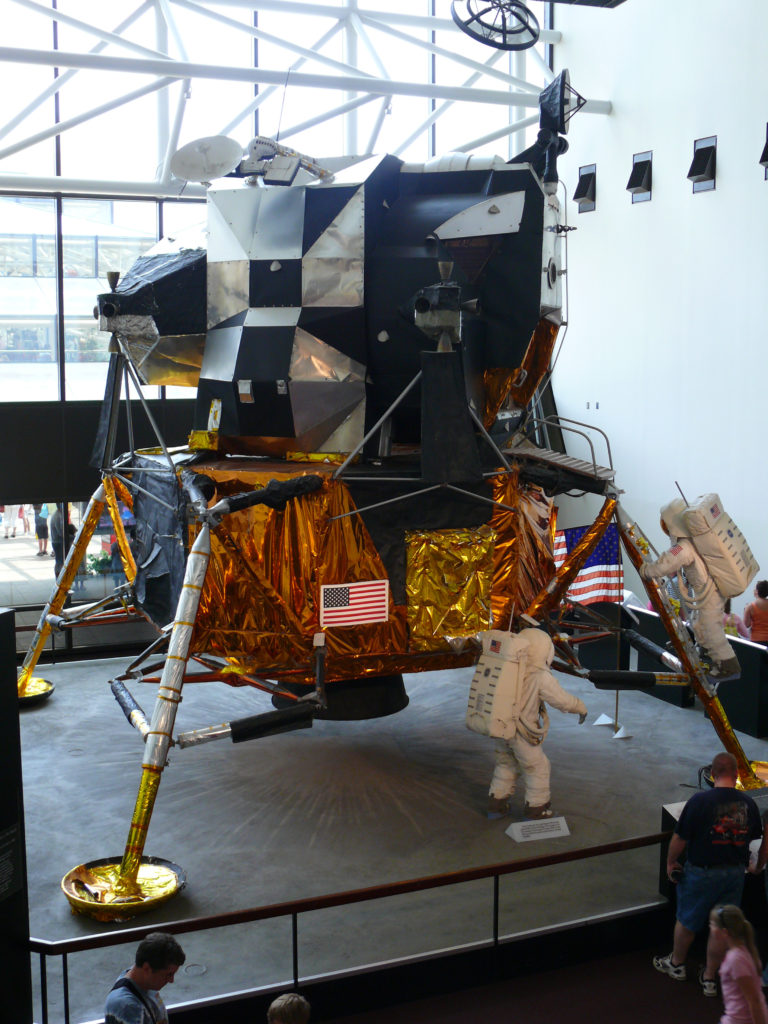
The Rocket off the moon… -

-

by JOHN WENZ

